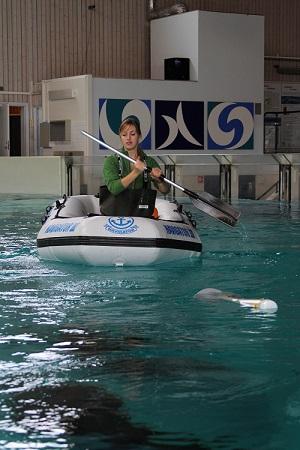Statistics

CPOD analysis
A total of 10 CPODs were used during the study, and they were located in the shallow area (4), the deep area (4) and on the slope (2) in the pool. The data gained from the CPODs turned out very noisy due to a too high sensitivity of the device, and even after reducing the internal gain as much as possible, the CPOD data still turned out very noisy. Therefore it was mainly used to get a general view of echolocation activity over time and to compare this between the different areas of the pool. The average number of echolocation clicks recorded with the CPODs was used to investigate the echolocation activity in the shallow area vs. the deep area. First an F-test was carried out to calculate if the variance was equal or unequal between these two datasets. Following a two sample T-test, performed to investigate if there was a significant difference between the recordings in the shallow and the deep areas.
PCL analysis
The total amount of clicks per week were compared with a one way ANOVA test, to investigate if a significant difference could be found between these weeks. A post-hoc Tukey test was carried out to find where the differences between the different weeks were.
The PCL database with total clicks per hour was divided between 4 groups; morning (6-12), afternoon (12-18), evening (18-00) and night (00-6). These groups were compared with a one way ANOVA test, to investigate if a significant difference could be found between these times. A post-hoc Tukey test was carried out to find where the differences in the times were found.
Responsible for this page:
Director of undergraduate studies Biology
Last updated:
05/13/15
